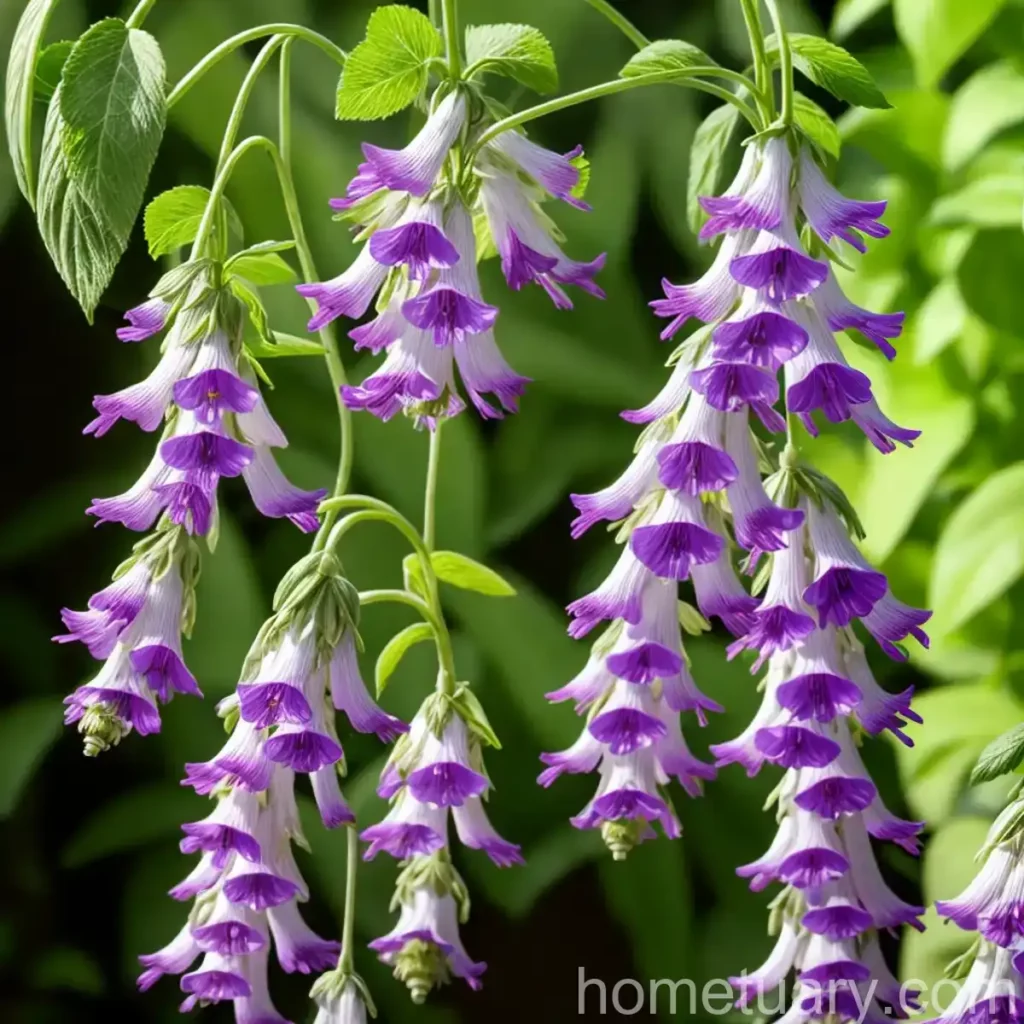Serbian Bellflower (Campanula poscharskyana): A Comprehensive Guide
Serbian bellflower, known scientifically as Campanula poscharskyana, is a delightful perennial plant that belongs to the Campanulaceae family, hailing from the Dinaric Alps. Its charming trailing habit and delicate star-shaped blooms make it a popular choice for gardeners seeking to add a touch of elegance to their landscapes. In this comprehensive guide, we will delve into the various aspects of this beautiful plant, including its culture, uses, growth requirements, and maintenance, among others.
What is Serbian Bellflower (Campanula poscharskyana)?
The Serbian bellflower, also referred to as trailing bellflower or Poscharsky’s bellflower, is a species native to Serbia, specifically from the Dinaric Alps and the western Balkans. It is a low-growing perennial that produces a profusion of star-shaped, violet-blue flowers during the summer, creating a stunning display in gardens and landscapes.
key Takeaways for Serbian Bellflower (Campanula poscharskyana)
- Common Name: Serbian Bellflower
- Scientific Name: Campanula poscharskyana
- Family: Campanulaceae
- Native to: Serbia, Dinaric Alps
- Preferred Growing Zones: 3-8
- Bloom Time: Summer
- Plant Type: Perennial
- Mature Height: 6-10 inches
- Sunlight Needs: Full Sun to Partial Shade
- Soil Type: Well-draining, fertile soil
- Watering: Moderate
- Uses: Groundcover, Borders, Containers
- Common Pests: Slugs, Snails
Now, let’s dive into the various aspects of cultivating and caring for this lovely plant.
Culture
Uses
The Serbian bellflower holds multiple uses in garden landscapes due to its low-growing and spreading habit. Some common uses include:
- Groundcover: Its trailing habit makes it an excellent choice for covering bare ground in garden beds and rock gardens.
- Borders: The delicate blue flowers add a charming border to pathways or garden beds.
- Containers: Serbian bellflower thrives in containers and hanging baskets, adding a touch of elegance to patios and balconies.
- Cut Flowers: The lovely blooms are suitable for cut flower arrangements, bringing the beauty of the garden indoors.
Water
Maintaining optimal soil moisture is crucial for the health and vigor of Serbian bellflower plants. While they are relatively drought-tolerant once established, regular watering is essential, especially during dry spells. However, it is important to avoid overwatering, as excessive moisture can lead to root rot and other issues.
Sunlight
Serbian bellflowers thrive in locations with bright, indirect sunlight or partial shade. While they can tolerate full sun, especially in cooler climates, providing some shade during the hottest part of the day can help prevent wilting and protect the delicate blooms.
Fertilizer
When it comes to fertilization, Serbian bellflowers benefit from a balanced, all-purpose fertilizer applied in early spring as new growth emerges. A slow-release fertilizer can also be incorporated into the soil during planting to provide a steady supply of nutrients throughout the growing season.
Soil
The ideal soil for Serbian bellflower is well-draining and fertile, with a slightly acidic to neutral pH range. Amending the soil with organic matter, such as compost or well-rotted manure, can improve its structure and fertility, providing an optimal growing medium for the plants.
Pruning
Pruning helps maintain the compact and tidy appearance of Serbian bellflowers while also encouraging continuous blooming. Deadheading spent flowers not only enhances the plant’s aesthetic appeal but also prevents self-seeding, ensuring that the plant’s energy is directed towards producing new blooms rather than setting seed.
Propagation
Serbian bellflowers can be easily propagated through division or by taking stem cuttings. Division is best carried out in early spring or fall, while stem cuttings can be taken in spring or summer. Both methods offer an effective way to increase your stock of these charming plants and can be an enjoyable aspect of gardening for many enthusiasts.
Container Popularity
The Serbian bellflower’s compact and trailing growth habit makes it an excellent choice for container gardening. When planted in containers or hanging baskets, it spills over the edges, creating an enchanting display of cascading blue blooms. This makes it a popular choice for adding a touch of beauty to balconies, patios, and other small outdoor spaces.
Common Diseases
Disease Diagnosis
While Serbian bellflowers are relatively resilient to diseases, they can occasionally fall victim to issues such as powdery mildew, root rot, or fungal leaf spots. Regular inspection of the plants for signs of discoloration, wilting, or unusual growth can help identify potential problems early on, allowing for prompt intervention and treatment.
Common Pests
The most common pests that may trouble Serbian bellflowers include slugs and snails, which are particularly attracted to the tender foliage and flowers. Employing organic pest control methods, such as using copper tape around containers or handpicking the pests, can help manage infestations without resorting to chemical treatments.
Botanist’s Tips
- Mulching: Applying a layer of organic mulch around Serbian bellflowers can help conserve soil moisture, suppress weed growth, and improve the overall soil structure.
- Companion Plants: Pairing Serbian bellflowers with other shade-loving perennials, such as hostas, astilbes, or ferns, can create visually appealing and harmonious garden compositions.
- Overwintering: In regions with harsh winters, providing a layer of mulch or protective covering can assist in overwintering Serbian bellflowers, ensuring their survival and vigor in the following growing season.
Fun Facts
- The specific epithet “poscharskyana” honors Josef Poscharsky, a botanist from Transylvania known for his contributions to the study of alpine flora.
- Serbian bellflowers are known for their ability to naturalize, spreading gradually to form attractive, flowering colonies in suitable growing conditions.
- The delicate, star-shaped blooms of Serbian bellflowers make them a magnet for pollinators, including bees and butterflies, enhancing the ecological value of garden landscapes.
Links to External Resources
For further information on Serbian bellflowers and related topics, the following resources can offer valuable insights:
With their captivating blooms and versatile growth habit, Serbian bellflowers have secured their place as a beloved addition to gardens and landscapes. By understanding and implementing the key elements of their care, enthusiasts can continue to enjoy the beauty and charm that these delightful plants bring to outdoor spaces.















